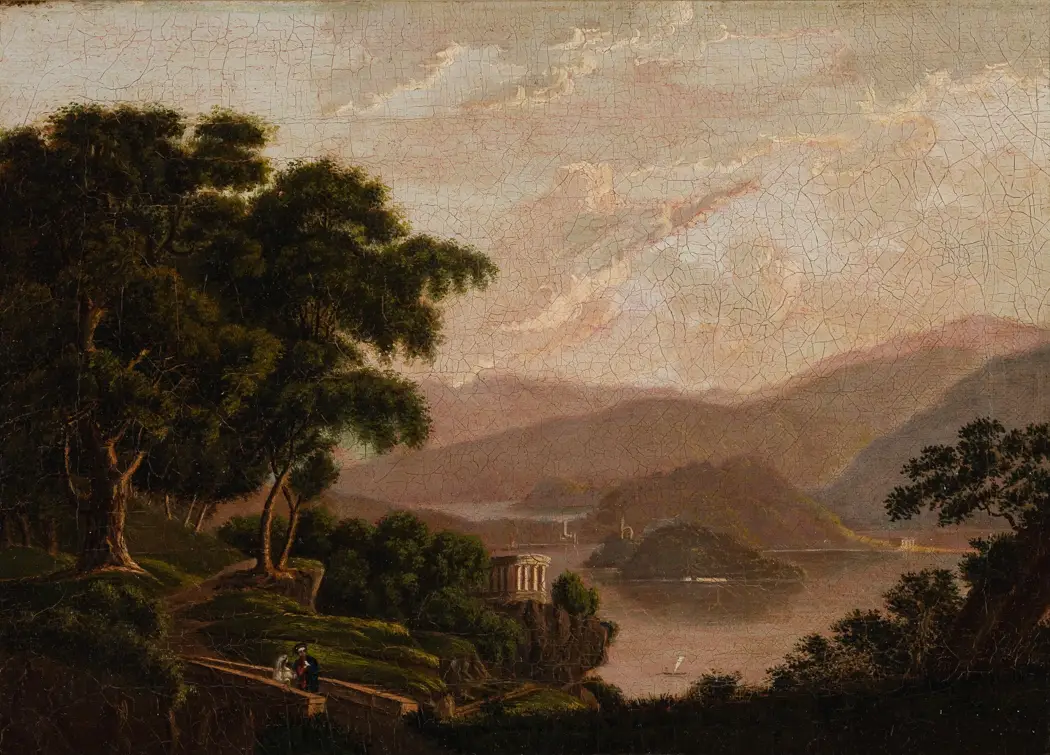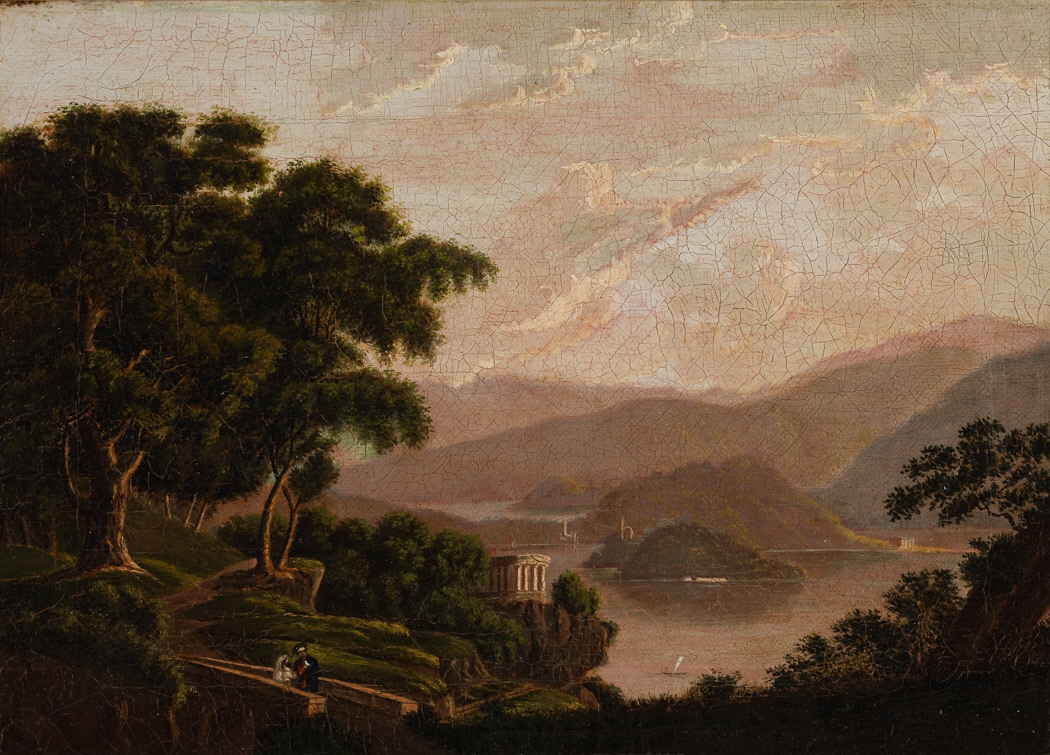
A Roman temple in front of the Comacina Island?

A painting dated 1839-40 reinterprets poetically the lake landscape.
This romantic and Arcadian vision, entitled Isola San Giovanni, is dated 1839-40 and belongs to the collection of the Peabody Essex Museum in Salem, MA. In fact the author, Sophia Peabody, did not have the chance to visit lake Como and worked from her knowledge of the engravings in travel books.
Isola San Giovanni, 1839-1840

In her reinterpretation of the original print the artist adds to the usual landscape a new detail, fruit of her imagination: in front of the island she paints a Roman temple, surrounded by woods and greenery. On the Comacina island and nearby you can find Roman remains, but the presence of a temple on the shores of the lake is a personal poetic vision and gives her painting an idyllic touch in the classical style.
Sophia Peabody was an accomplished artist – one of the earliest women in American painting – and created Isola San Giovanni right after her engagement to the novelist Nathaniel Hawthorne. The figures of a man and woman walking across a bridge in the left foreground may represent an idealized vision of herself and Hawthorne. The Peabody Essex Museum in Salem, MA owns another oil painting created by Sophia Peabody in the same years and inspired to a lake view: Villa Menaggio, Lago di Como (1839-40).
Villa Menaggio, Lago di Como, 1839-1840

Though promising, Sophia’s career as a painter did not go much further. With the birth of her first son, family duties prevailed and Sophia abandoned painting. Indeed she is usually mentioned as “wife of Nathaniel Hawthorne” and not remembered for her artistic talent.
Click here to go to the page of the Peabody Essex Museum website where you can see the two paintings.